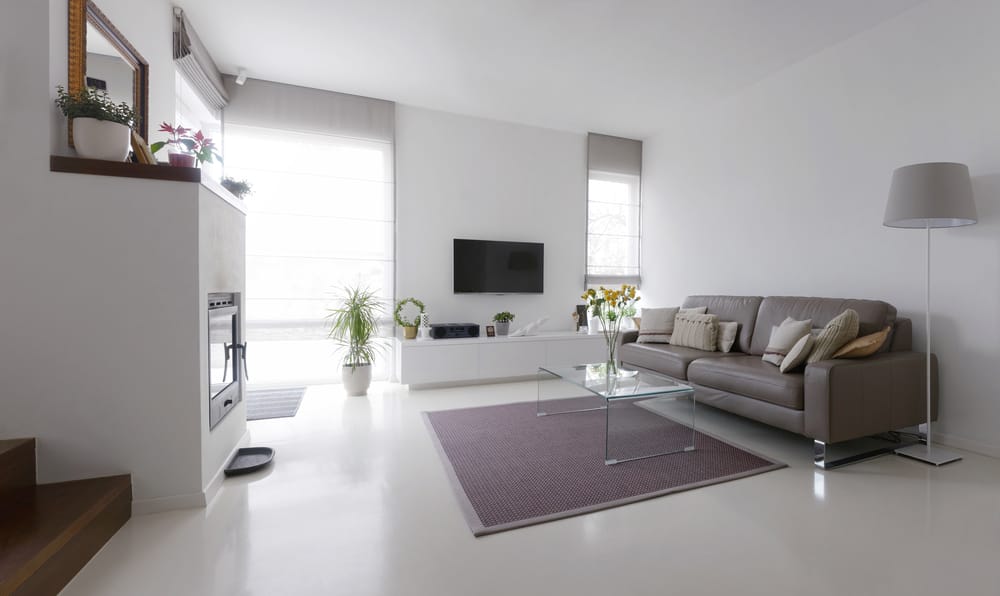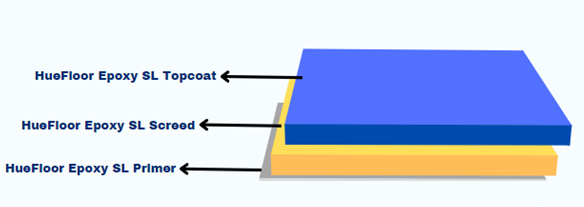
Epoxy Flooring is quicky becoming a new norm in a majority of industries and even certain residential & commercial projects due to its many advantages and flexibility / customisation based on the needs of individual users. It has gained so much prevalence in certain industries that in fact it has been mandated by governing authorities to apply Epoxy Floor Coatings in their units, and at regular intervals too.


Before one decides to do a job of Epoxy flooring, it is important to understand how exactly it works. First a highly specialised team operates on the floor using highly specialised equipment to treat the floor accordingly for subsequent layers of the floor coat to bond better to the concrete surface. It is very important to stress that this step, the surface preparation, is probably the most vital, but often overlooked step during execution of epoxy floor coating systems. Surface preparation requires expertise, time, equipment and more importantly knowing what to do under the circumstances. Every floor is different and that is why the techniques must be dynamic to suit its particular needs.
Once the surface is prepared adequately, one or two coats of HueFloor™ Epoxy SL Primer will be applied depending upon the porosity, moisture content, condition & the age of the floor. This film will create a barrier for moisture and a layer for adhesion between the substrate and the next layer of the Epoxy flooring system, the screed. Once the primer has dried, HueFloor™ Epoxy SL Screed will be applied using spiked trowels and spiked rollers. This has to be applied using specialised equipment apart from the trowels & rollers like spiked shoes and such. Typical thickness of the screed depends upon specific requirements like load bearing capacity required, chemical resistance, abrasive resistance etc. However generally the thickness ranges from 1mm to 4mm. Once the screed dries, HueFloor™ Epoxy SL Topcoat of the desired shade can be applied at required thickness using a spiked trowel & spiked roller to finish. Typical thickness of the topcoat varies from 1mm to 3mm.
Epoxy floors are quite tricky to deal with during application requiring professional expertise and years of experience. There are many ways in which your epoxy flooring can go wrong leading to a sizable investment loss or shabby, uneven floors.
Most of the failures can be routed back to improper surface preparation, poor quality of products or improper application methods. Surface preparation, as mentioned earlier, is the most crucial step in the application procedure that is often overlooked. Proper equipment like industrial buffing machines, scarifiers, hand grinders, dust collectors etc. must be used and since these equipments are quite expensive, a majority of applicators make do without them taking a huge risk and jeopardising the entire project from the very beginning.
Another common cause of failures are poor quality of products used. There are many brands available in the market, both international as well as local. It is thus important to choose the right brand before you go ahead with the project. It is important to be wary of some products that use solvents in their formulations. Epoxy SL floors are meant to be completely solvent free and the presence of solvents exposes the floors to a variety of different failures like formations of blisters, bubbles after a while along with a reduced overall life of the floor.
Epoxy floors can be used for a variety of applications and are highly customisable in nature. The exact type of product & its thickness depends upon a variety of factors, which is why it is best to consult a professional for this. You can browse the different product Huekkor Paints has to offer here.
© 2025 Huekkor Paints. All Right Reserved.
Designed & Developed by  Innov Touch Technologies Pvt Ltd.
Innov Touch Technologies Pvt Ltd.